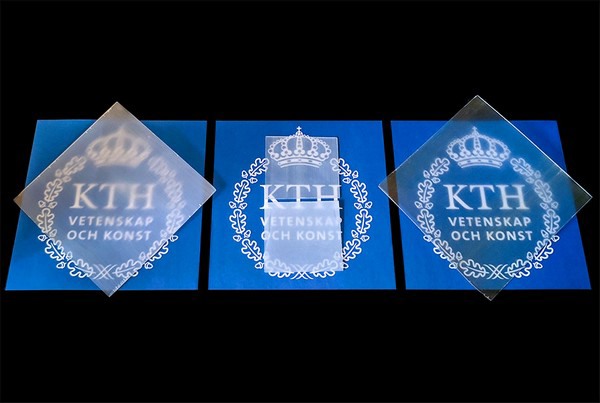Five years after introducing see-through wood building material, researchers in Sweden have taken it to another level. They found a way to make their composite 100 percent renewable – and more translucent – by infusing wood with a clear bio-plastic made from citrus fruit.
Since it was first introduced in 2016, transparent wood has been developed by researchers at KTH Royal Institute of Technology as one of the most innovative new structural materials for building construction. It lets natural light through and can even store thermal energy.

The latest version of transparent wood developed at KTH is more translucent, and is made with renewable polymer. (Photo: Céline Montanari)
The key to making wood into a transparent composite material is to strip out its lignin, the major light-absorbing component in wood. But the empty pores left behind by the absence of lignin need to be filled with something that restores the wood’s strength and allows light to permeate.
In early versions of the composite, researchers at KTH’s Wallenberg Wood Science Center used fossil-based polymers. Now, the researchers have successfully tested an eco-friendly alternative: limonene acrylate, a monomer made from limonene. They reported their results in Advanced Science.
From orange juice to building material
“The new limonene acrylate it is made from renewable citrus, such as peel waste that can be recycled from the orange juice industry,” says lead author, PhD student Céline Montanari.
The new composite offers optical transmittance of 90 percent at 1.2 mm thickness and remarkably low haze of 30 percent, the researchers report. Unlike other transparent wood composites developed during the past five years, the material developed at KTH is intended for structural use. It shows heavy-duty mechanical performance: with a strength of 174 MPa (25.2 ksi) and elasticity of 17 GPa (or about 2.5 Mpsi).
Yet all along, sustainability has been a priority for the research group, says Professor Lars Berglund, the head of the KTH’s Department of Fibre and Polymer Technology.
“Replacing the fossil-based polymers has been one of the challenges we have had in making sustainable transparent wood,” Berglund says.
Environmental considerations and so-called green chemistry permeate the entire work, he says. The material is made with no solvents, and all chemicals are derived from bio-based raw materials.
Potential for nanotechnologies
The new advances could enable a yet unexplored range of applications, such as in wood nanotechnology, Berglund says. Possibilities include smart windows, wood for heat-storage, wood that has built-in lighting function – even a wooden laser.
“We have looked at where the light goes, and what happens when it hits the cellulose,” Berglund says. “Some of the light goes straight through the wood, and makes the material transparent. Some of the light is refracted and scattered at different angles and gives pleasant effects in lighting applications.”
For more information: kth.se
